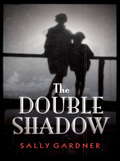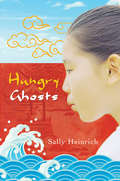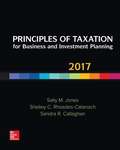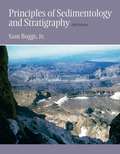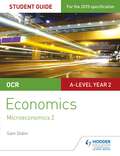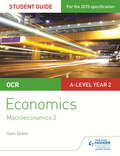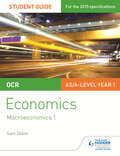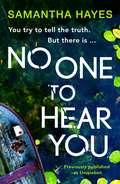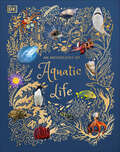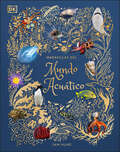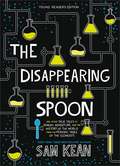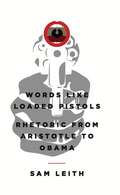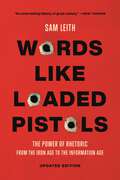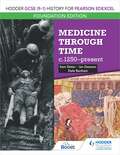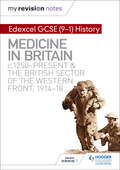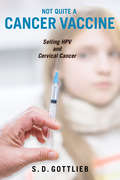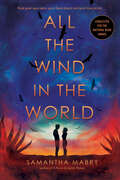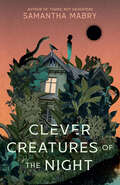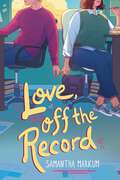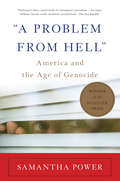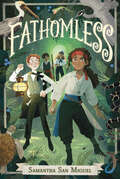- Table View
- List View
The Double Shadow
by Sally GardnerArnold Ruben has created a memory machine, a utopia housed in a picture palace, where the happiest memories replay forever, a haven in which he and his precious daughter can shelter from the war-clouds gathering over 1937 Britain. But on the day of her 17th birthday Amaryllis leaves Warlock Hall and the world she has known and wakes to find herself in a desolate and disturbing place. Something has gone terribly wrong with her father's plan.Against the tense backdrop of the Second World War, Sally Gardner explores families and what binds them, fathers and daughters, past histories, passions and cruelty, love and devastation in a novel rich in character and beautifully crafted.
Hungry Ghosts
by Sally HeinrichSarah hadn?t wanted to come to Australia. She?s been perfectly happy with things how they were in Singapore where school was for learning, and `being cool? was a non-issue. Now Dad was trying his best to make her into a `fair dinkum? Aussie while Mum was determined to hang on to all the old Asian traditions. During the Festival of the Hungry Ghosts Sarah meets the ghost of Pei, a Chinese girl who was not much older than Sarah when she died. As the story unfolds, it becomes apparent that the girls share a common ancestry. Initially reluctant, Sarah helps Pei to discover the truth about events surrounding her death and the lover she believed had betrayed her. Set in contemporary Singapore and Australia, and nineteenth-century China and Australia, this sprawling tale by Sally Heinrich touches on issues of Chinese immigration to Australia from the 1800s to the present.
Principles of Taxation for Business and Investment Planning (2017 Edition)
by Shelley Rhoades-Catanach Sally M. JonesPrinciples of Taxation for Business and Investment Planning focuses on the role taxes play in business and investment decision, presenting the general roles of taxation and discussing its implications for all tax-paying entities before delving into a specific exception. The benefit of this approach is a strong grasp of the fundamental principles informing taxation rules. This helps students comprehend the framework of the tax system, making future changes to the tax code easier to understand-no matter how many there are. Unlike traditional introductory texts, Principles of Taxation for Business and Investment Planning downplays the technical detail that makes the study of taxation such a nightmare for business students. This text attempts to convince students that an understanding of taxation is not only relevant but critical to their success in the business world. Don't just teach your students the tax code; teach them how the tax code affects business decision making with the 2017 edition!
Foundations of Personal Finance (Eighth Edition)
by Sally R. CampbellWhether you teach classes in Family and Consumer Sciences or Business, Foundations of Personal Finance is the right text for you. It introduces students to fundamental economic concepts so they can better understand an increasingly complex world. They learn how to identify and manage resources to achieve their own economic goals. A chapter covers each personal finance area: taxes, credit, insurance, savings, investments, and financial institutions. Students also learn how to make wise decisions about the things that affect many household budgets: food, clothing, transportation, housing, technology, and health. The text challenges students to plan their futureswith education, job training, and careersand help make environmental resources available for future generations. Each chapter contains colorful photos and charts, compelling case studies, career profiles, reports about current global issues, and related content from other academic areas.
Manage Your Money Like a F*cking Grown-Up: The Best Money Advice You Never Got
by Sam BeckbessingerYou're going to earn plenty of money over your lifetime. Are you going to waste it on stupid crap that doesn't make you happy, or let it buy your freedom and your most audacious dreams?We never get an instruction manual about how money works. Most of what we learn about money comes from advertising or from other people who know as little as we do. No wonder we make such basic mistakes. No wonder we feel disempowered and scared. No wonder so many of us just decide to stick our heads in the damn sand and never deal with it. In Manage Your Money Like a F*cking Grown Up, Sam Beckbessinger tells it to you straight: how to take control of your money to take control of your life.In this clear and engaging basic guide to managing your finances, you will learn: - How to trick your dumb brain into saving more, without giving up fun- How to make a bona fide grown-up budget- Why you need to forget what you've learned about credit- How to negotiate a raise- Why buying a house (probably) won't make you rich- The one super-simple investment you needWith helpful exercises, informative illustrations (also: kittens) and straightforward advice, this book doesn't shy away from the psychology of money, and is empowering, humorous and helpful. The book you wish you'd had at 25, but is never too late to read.
Principles of Sedimentology and Stratigraphy (Fifth Edition)
by Sam BoggsThis concise treatment of the fundamental principles of sedimentology and stratigraphy highlights the important physical, chemical, biological, and stratigraphic characteristics of sedimentary rocks. It emphasizes the ways in which the study of sedimentary rocks is used to interpret depositional environments, changes in ancient sea level, and other intriguing aspects of Earth's history.
OCR A-level Economics Student Guide 3: Microeconomics 2
by Sam DobinWritten by experienced teacher Sam Dobin, this Student Guide for Economics:- Identifies the key content you need to know with a concise summary of topics examined in the A-level specifications- Develops your independent learning skills with content you can use for further study and research- Enables you to measure your understanding with exam tips and knowledge check questions, with answers at the end of the guide- Helps you to improve your exam technique with sample answers to exam-style questions
OCR A-level Economics Student Guide 4: Macroeconomics 2
by Sam DobinWritten by experienced teacher Sam Dobin, this Student Guide for Economics:- Identifies the key content you need to know with a concise summary of topics examined in the A-level specifications- Develops your independent learning skills with content you can use for further study and research- Enables you to measure your understanding with exam tips and knowledge check questions, with answers at the end of the guide- Helps you to improve your exam technique with sample answers to exam-style questions
OCR Economics Student Guide 1: Microeconomics 1
by Sam DobinWritten by experienced teacher Sam Dobin, this Student Guide for Economics:- Identifies the key content you need to know with a concise summary of topics examined in the AS and A-level specifications- Enables you to measure your understanding with exam tips and knowledge check questions, with answers at the end of the guide- Helps you to improve your exam technique with sample answers to exam-style questions- Develops your independent learning skills with content you can use for further study and research
Unspoken
by Sam HayesA secret is about to destroy a family in Sam Hayes' breathtaking follow-up to BLOOD TIES... Mary Marshall would do anything for her daughter Julia. A devoted grandmother to Julia?s children, she?s always been the rock her family can rely on. Until now. Mary has a past Julia knows nothing about, and it?s come back to haunt her. Julia's husband Murray French is walking a tightrope. A solicitor struggling with an alcohol problem, he?s about to lose his wife and his children to another man: someone successful, someone they deserve. Someone who?s everything he?s not. Can he ever get his family back? Just when Julia thinks life is starting to turn around, she stumbles upon the brutalised body of a girl she teaches. And as the terrible present starts to shed light on her mother?s past, Julia realises her family?s nightmare is only just beginning...
An Anthology of Aquatic Life (DK Children's Anthologies)
by Sam HumeDive into the wondrous world of water and discover the stories of more than 100 incredible aquatic lifeforms.The underwater world is so much bigger than young minds can fathom and there is always more to learn. An Anthology of Aquatic Life is a stunning ocean encyclopedia for young readers to explore, with reference pages packed with fascinating information, little learners will be captivated as they discover the facts, stories and myths behind their favourite sea-life animals. From the deepest, widest ocean to the tiniest puddle, this beautiful compendium takes young readers on an enthralling journey through the aquatic world, meeting amazing animals, ingenious plants, and much more along the way. Stunning photography and gorgeous illustrations complement storybook descriptions about each lifeform, and children can uncover hundreds of fascinating facts as they read. Did you know that elephant seals can hold their breath underwater for more than an hour, or that the brown basilisk reptile can run across water? Discover the science of how plants have learnt to live, feed, and breathe in water, and take a look at the unique challenges of distinct ecosystems on feature spreads about rivers, lakes, wetlands, and more. Celebrate your child&’s curiosity as they:- Explore detailed photographs and striking illustrations of nature in action- Reveal fun facts and myths about how a range of animals and plants adapt to their environments- Uncover more than 100 aquatic lifeforms, each with stunning images and captivating information.This ocean encyclopedia for children is the perfect blend of storybook style text with out of this world illustrations which makes it a fantastic sea life book for children who are obsessed with the underwater world. Encourage young readers to go on a journey to explore a world of information, making this the ideal first reference book for kids aged 7-9 to enjoy for hours on end, whether reading with the family or reading alone, this fun fact book also doubles up as the perfect gift for curious kids who love to learn. Explore the diversity of the animal kingdom whilst uncovering: -Stunning Jacket Detail: gold foil, holographic foil & metallic gold edges-Stunning photography & illustrations inside-A beautiful book for the whole family to treasure -A quality gift to be passed down through the generationsMore in the SeriesAnthology of Aquatic Animals is part of the beautiful and informative Anthology series. Complete the series and nurture your child's curiosity as they explore the natural world with The Wonders of Nature or let them walk with the dinosaurs who ruled the earth before them in Dinosaurs and other Prehistoric Life.
Maravillas del mundo acuático (DK Children's Anthologies)
by Sam HumeDesde el océano más ancho y profundo hasta el charco más pequeño, este hermoso álbum lleva a los niños lectores por un viaje fascinante a través del mundo acuático, en el que conocerán animales increíbles, plantas ingeniosas y mucho más. Impresionantes fotografías y hermosas ilustraciones complementan las descripciones de cada forma de vida, con las que los niños descubrirán cientos de datos interesantes mientras leen. ¿Sabías que los elefantes marinos pueden contener la respiración bajo el agua durante más de una hora, o que la planta acuática Victoria Cruiziana puede soportar el peso de un adulto, o que el reptil basílisco (teterete) puede correr sobre el agua?Descubre la ciencia de cómo las plantas han aprendido a vivir, alimentarse y respirar en el agua y echa un vistazo a los desafíos únicos de los diferentes ecosistemas, las características de los ríos, lagos, humedales y más. Contiene un índice visual lleno de información de referencia, con el tamaño y hábitat de cada especie.Con una elegante cinta marcapáginas y detalles dorados en la portada y en los bordes, 'Maravillas del mundo acuático' es un regalo atractivo para cualquier niño que le encante el mundo natural, ideal para que los más pequeños exploren por sí mismos o para leer cuentos a la hora de acostarse. Desde tiburones y peces vela hasta juncos y escarabajos, hay algo para todos en esta celebración de todas las cosas acuáticas.From the deepest, widest ocean to the tiniest puddle, this beautiful compendium takes young readers on an enthralling journey through the aquatic world, meeting amazing animals, ingenious plants, and much more along the way. Stunning photography and gorgeous illustrations complement storybook descriptions about each lifeform, and children can uncover hundreds of fascinating facts as they read. Did you know that elephant seals that can hold their breath underwater for more than an hour, or that the Victoria Amazonica water lily can support the weight of an adult, or that the brown basilisk reptile can run across water?Discover the science of how plants have learned to live, feed, and breathe in water, and take a look at the unique challenges of distinct ecosystems on feature spreads about rivers, lakes, wetlands, and more. There&’s also a visual index, packed with reference information including the size and location of each species.With foil on the cover, gilded edges, and a ribbon for keeping your place, 'Maravillas del mundo acuático' makes an attractive gift for any child who can&’t get enough of the natural world – and it&’s perfect for young readers to explore by themselves or for bedtime stories. From sharks and sailfish, to bulrushes and beetles, there&’s something for everyone in this celebration of all things aquatic.
The Disappearing Spoon: And Other True Tales of Rivalry, Adventure, and the History of the World from the Periodic Table of the Elements (Young Readers Edition)
by Sam KeanA young readers edition of the New York Times bestseller The Disappearing Spoon, chronicling the extraordinary stories behind one of the greatest scientific tools in existence: the periodic table.Why did Gandhi hate iodine (I, 53)? How did radium (Ra, 88) nearly ruin Marie Curie's reputation? And why did tellurium (Te, 52) lead to the most bizarre gold rush in history?The periodic table is a crowning scientific achievement, but it's also a treasure trove of adventure, greed, betrayal, and obsession. The fascinating tales in The Disappearing Spoon follow elements on the table as they play out their parts in human history, finance, mythology, conflict, the arts, medicine, and the lives of the (frequently) mad scientists who discovered them. Adapted for a middle grade audience, the young readers edition of The Disappearing Spoon offers the material in a simple, easy-to-follow format, with approximately 20 line drawings and sidebars throughout. Students, teachers, and burgeoning science buffs will love learning about the history behind the chemistry.
Words Like Loaded Pistols
by Sam LeithRhetoric is all around us. It's what inspires armies, convicts criminals, and makes or breaks presidential candidates. And it isn't just the preserve of politicians. It's in the presentation to a key client, the half-time talk in the locker room, and the plea to your children to eat their vegetables. Rhetoric gives words power: it persuades and cajoles, inspires and bamboozles, thrills and misdirects. You have been using rhetoric yourself, all your life. After all, you know what a rhetorical question is, don't you?In Words Like Loaded Pistols, Sam Leith traces the art of persuasion, beginning in ancient Syracuse and taking us on detours as varied and fascinating as Elizabethan England, Milton's Satanic realm, the Springfield of Abraham Lincoln and the Springfield of Homer Simpson. He explains how language has been used by the great heroes of rhetoric (such as Cicero and Martin Luther King Jr.), as well as some villains (like Adolf Hitler and Richard Nixon.)Leith provides a primer to rhetoric's key techniques. In Words Like Loaded Pistols, you'll find out how to build your own memory-palace; you'll be introduced to the Three Musketeers: Ethos, Pathos and Logos; and you'll learn how to use chiasmus with confidence and occultation without thinking about it. Most importantly of all, you will discover that rhetoric is useful, relevant - and absolutely nothing to be afraid of.
Words Like Loaded Pistols
by Sam LeithRhetoric is all around us. It's what inspires armies, convicts criminals, and makes or breaks presidential candidates. And it isn't just the preserve of politicians. It's in the presentation to a key client, the half-time talk in the locker room, and the plea to your children to eat their vegetables. Rhetoric gives words power: it persuades and cajoles, inspires and bamboozles, thrills and misdirects. You have been using rhetoric yourself, all your life. After all, you know what a rhetorical question is, don't you?In Words Like Loaded Pistols, Sam Leith traces the art of persuasion, beginning in ancient Syracuse and taking us on detours as varied and fascinating as Elizabethan England, Milton's Satanic realm, the Springfield of Abraham Lincoln and the Springfield of Homer Simpson. He explains how language has been used by the great heroes of rhetoric (such as Cicero and Martin Luther King Jr.), as well as some villains (like Adolf Hitler and Richard Nixon.)Leith provides a primer to rhetoric's key techniques. In Words Like Loaded Pistols, you'll find out how to build your own memory-palace; you'll be introduced to the Three Musketeers: Ethos, Pathos and Logos; and you'll learn how to use chiasmus with confidence and occultation without thinking about it. Most importantly of all, you will discover that rhetoric is useful, relevant - and absolutely nothing to be afraid of.
Words Like Loaded Pistols
by Sam LeithRhetoric is all around us. It’s what inspires armies, convicts criminals, and makes or breaks presidential candidates. And it isn’t just the preserve of politicians. It’s in the presentation to a key client, the half-time talk in the locker room, and the plea to your children to eat their vegetables. Rhetoric gives words power: it persuades and cajoles, inspires and bamboozles, thrills and misdirects. You have been using rhetoric yourself, all your life. After all, you know what a rhetorical question is, don’t you? In Words Like Loaded Pistols, Sam Leith traces the art of persuasion, beginning in ancient Syracuse and taking us on detours as varied and fascinating as Elizabethan England, Milton’s Satanic realm, the Springfield of Abraham Lincoln and the Springfield of Homer Simpson. He explains how language has been used by the great heroes of rhetoric (such as Cicero and Martin Luther King Jr. ), as well as some villains (like Adolf Hitler and Richard Nixon. ) Leith provides a primer to rhetoric’s key techniques. In Words Like Loaded Pistols, you’ll find out how to build your own memory-palace; you’ll be introduced to the Three Musketeers: Ethos, Pathos and Logos; and you’ll learn how to use chiasmus with confidence and occultation without thinking about it. Most importantly of all, you will discover that rhetoric is useful, relevant - and absolutely nothing to be afraid of.
Words Like Loaded Pistols: Rhetoric from Aristotle to Obama
by Sam LeithIn Words Like Loaded Pistols, Sam Leith traces the art of persuasion, beginning in ancient Syracuse and taking us on detours as varied and fascinating as Elizabethan England, Milton's Satanic realm, the Springfield of Abraham Lincoln and the Springfield of Homer Simpson. He explains how language has been used by the great heroes of rhetoric (such as Cicero and Martin Luther King Jr.), as well as some villains (like Adolf Hitler and Richard Nixon.) Words Like Loaded Pistols is a primer to rhetoric's key techniques; you'll find out how to build your own memory-palace; you'll be introduced to the Three Musketeers: Ethos, Pathos and Logos; and you'll learn how to use chiasmus with confidence and occultation without thinking about it. Most importantly of all, you will discover that rhetoric is useful, relevant - and absolutely nothing to be afraid of.
Hodder GCSE (9–1) History for Pearson Edexcel Foundation Edition: Medicine through time c.1250–present
by Sam SlaterHelp more students access the content for Pearson Edexcel GCSE History with this Foundation Edition, containing bespoke text and activities to support students working up to Grade 5.Covering Medicine in Britain, c1250-present and the British sector of the Western Front, 1914-18, this book:- Follows the same structure and page numbers as the mainstream textbook for effective co-teaching in the same class- Simplifies and reduces the text on each page, focusing on the essential knowledge that students need- Uses carefully-controlled vocabulary throughout, ensuring that the reading level is appropriate for all students, including those with lower literacy levels or English as an additional language (EAL)- Develops students' knowledge, understanding and skills through accessible and achievable tasks- Provides step-by-step guidance on how to answer exam questions and target a Grade 5, building students' confidence as they revise and practise for their exams
My Revision Notes: Medicine in Britain, c1250-present and The British sector of the Western Front, 1914-18
by Sam SlaterEndorsed for EdexcelTarget success in Edexcel GCSE (9-1) History with this proven formula for effective, structured revision; key content coverage is combined with exam-style questions, revision tasks and practical tips to create a revision guide that students can rely on to review, strengthen and test their knowledge.With My Revision Notes, every student can:- Plan and manage a successful revision programme using the topic-by-topic planner- Enjoy an interactive approach to revision, with clear topic summaries that consolidate knowledge and related activities that put the content into context- Build, practise and enhance exam skills by progressing through activities set at different levels- Improve exam technique through exam-style questions and model answers with commentary from expert authors and teachers- Get exam ready with extra quick quizzes and answers to the activities available online
Not Quite a Cancer Vaccine: Selling HPV and Cervical Cancer
by Samantha D. GottliebIn Not Quite a Cancer Vaccine, medical anthropologist S.D. Gottlieb explores how the vaccine Gardasil—developed against the most common sexually-transmitted infection, human papillomavirus (HPV)—was marketed primarily as a cervical cancer vaccine. Gardasil quickly became implicated in two pre-existing debates—about adolescent sexuality and pediatric vaccinations more generally. Prior to its market debut, Gardasil seemed to offer female empowerment, touting protection against HPV and its potential for cervical cancer. Gottlieb questions the marketing pitch’s vaunted promise and asks why vaccine marketing unnecessarily gendered the vaccine’s utility, undermining Gardasil’s benefit for men and women alike. This book demonstrates why in the ten years since Gardasil’s U.S. launch its low rates of public acceptance have their origins in the early days of the vaccine dissemination. Not Quite a Cancer Vaccine addresses the on-going expansion in U.S. healthcare of patients-as-consumers and the ubiquitous, and sometimes insidious, health marketing of large pharma.
All the Wind in the World
by Samantha MabryLonglisted for the National Book Award for Young People’s Literature Keep your eyes open . . . your head down . . . and your love secret. Sarah Jac Crow and James Holt have fallen in love working in the endless fields that span a bone-dry Southwest in the near future—a land that’s a little bit magical, deeply dangerous, and bursting with secrets. To protect themselves, they’ve learned to work hard and, above all, keep their love hidden from the people who might use it against them. Then, just when Sarah Jac and James have settled in and begun saving money for the home they dream of near the coast, a horrible accident sends them on the run. With no choice but to start over on a new, possibly cursed ranch, the delicate balance of their lives begins to give way—and they may have to pay a frighteningly high price for their love. All the Wind in the World is a breathtaking tale of dread and danger, romance and redemption.
Clever Creatures of the Night
by Samantha MabryIn this gripping literary horror, Case&’s best friend Drea goes missing, forcing her into a bizarre, cultlike—and possibly murderous world—perfect for fans of The Honeys and Mexican Gothic. Something bad happened here. When Case arrives at a run-down, ivy-covered house tucked deep in the West Texas woods, an ashy haze lingers in the air and the sky is tissue-paper pink. Her best friend Drea has been living here with a few classmates Case has never met, and Drea asked her to visit in a letter dated two weeks ago. But now Drea is nowhere to be found. Drea&’s roommates can&’t—or won&’t—answer questions, leaving Case to search alone. She finds bits of Drea&’s journal hidden in the tiles of the bathroom wall, in a beat-up cooler by the muddy river, wedged into the frame of her closet door. As Case pieces together Drea&’s life in this strange house, the roommates&’ behavior puts her increasingly on edge—and she&’s not the only one. The animals nearby are lashing out, attacking each other, threatening the humans. Something bad happened in this house. Something that must be connected to Drea&’s disappearance. And if she gets too close to the truth, Case just might be next.
Love, Off the Record
by Samantha MarkumThe Hating Game meets Alex, Approximately in this smart, chemistry-filled teen rom-com about two rival journalism students competing for the same position on their university newspaper.Wyn is going to beat Three even if it kills her—or, preferably, him. Being freshmen staffers on the university newspaper puts them at the bottom of the pecking order—until a rare reporter spot opens up. Wyn and Three are both determined to get the position, starting a game of sabotage that pushes them to do their worst, from stealing each other&’s ideas to playing twisted mind games. No road is too low when it comes to winning. As Wyn&’s search for the perfect story leads her to an anonymous, campus-wide dating app, she hits it off with a mystery man she thinks might be the cute RA from her dorm. But Wyn is all too familiar with being rejected because of her weight, and she&’s hesitant to reveal her identity, even as she grows closer with someone who might be the guy of her dreams. When Three breaks a story that&’s closer to home than he or Wyn expects, the two must put aside their differences to expose the truth—and face their real feelings for each other, which threaten everything Wyn has built with her anonymous match.
A Problem From Hell: American and the Age of Genocide
by Samantha Power<P>In 1993, as a 23-year-old correspondent covering the wars in the Balkans, I was initially comforted by the roar of NATO planes flying overhead. <P>President Clinton and other western leaders had sent the planes to monitor the Bosnian war, which had killed almost 200,000 civilians. But it soon became clear that NATO was unwilling to target those engaged in brutal "ethnic cleansing. " American statesmen described Bosnia as "a problem from hell," and for three and a half years refused to invest the diplomatic and military capital needed to stop the murder of innocents. <P> In Rwanda, around the same time, some 800,000 Tutsi and opposition Hutu were exterminated in the swiftest killing spree of the twentieth century. Again, the United States failed to intervene. This time U. S. policy-makers avoided labeling events "genocide" and spearheaded the withdrawal of UN peacekeepers stationed in Rwanda who might have stopped the massacres underway. <P>Whatever America's commitment to Holocaust remembrance (embodied in the presence of the Holocaust Museum on the Mall in Washington, D. C. ), the United States has never intervened to stop genocide. This book is an effort to understand why. <P> While the history of America's response to genocide is not an uplifting one, "A Problem from Hell" tells the stories of countless Americans who took seriously the slogan of "never again" and tried to secure American intervention. Only by understanding the reasons for their small successes and colossal failures can we understand what we as a country, and we as citizens, could have done to stop the most savage crimes of the last century. -Samantha <P><P> <B>Pulitzer Prize Winner</B>
Fathomless (Spineless)
by Samantha San Miguel&“Pure storytelling at its best.&”—Kirkus Reviews, Starred Review Ghostly pirates, lost treasure, and high adventure abound in Fathomless, the sequel to Spineless, set in glittering Gilded Age Florida. After months away at boarding school, Lulu Davenport was looking forward to summer vacation at her home on the southwest Florida coast, especially since her best friend, Algie Emsworth, will be spending his vacation with the Davenport family. But since his widowed mother has fallen on hard times, he&’s gotten a job nearby that keeps him away from the house most of the day. And Frankie, Lulu&’s sister and usual companion, is out of commission after injuring herself while sailing. But when Lulu hears about a possible haunting in a nearby abandoned fort and rumors of hidden treasure, she decides it&’s time to strike out on her own and solve the mystery herself. In the process, she meets Vic, a blind boy who&’s just moved to town, and the two of them embark on a hunt for clues about the ghostly appearances. Soon enough, Frankie and Algie join them, and the four friends uncover all sorts of very real dastardly deeds going on, and the villain is much closer to home than they expected!Fathomless is full of hijinks, mystery, and heart, as Samantha San Miguel brings readers into the wild and wonderful world of nineteenth century Florida in this sparkling sequel to Spineless.
